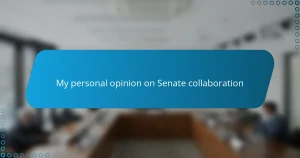Key takeaways
- Political influence strategies blend persuasion and emotional engagement to shape opinions and behaviors.
- Donald Trump’s approach is characterized by direct communication, emotional appeals, and aggressive media use, leading to polarization in the political landscape.
- Key tactics include simple messaging, provocation, and repetition, which resonate with audiences and energize supporters.
- Trump’s influence raises questions about the health of democracy and the future of political communication in fostering unity or division.
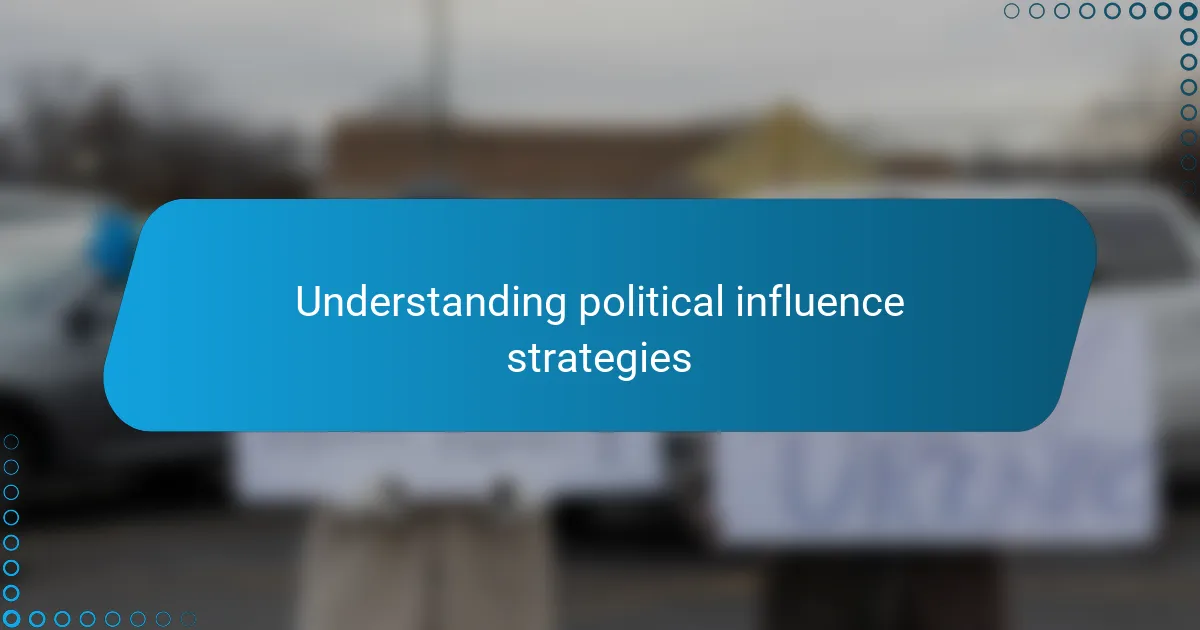
Understanding political influence strategies
Political influence strategies are essentially the art of shaping opinions and behaviors to achieve specific goals. From my experience observing various political figures, these tactics often blend persuasion, messaging, and sometimes, manipulation. Have you ever noticed how certain speeches or social media posts seem designed not just to inform but to provoke a particular reaction? That’s influence at work.
I recall moments when I felt my own views swayed by the sheer force of a well-crafted narrative, even when I initially resisted it. This made me realize how subtle and powerful these strategies can be—often operating beneath the surface, influencing without overt coercion. It’s a reminder that political influence is as much about connecting emotionally as it is about presenting facts.
Understanding these strategies means asking critical questions: Who benefits from this message? What emotions does it tap into? In my view, cracking this code is vital for anyone wanting to navigate the complex landscape of political communication without losing their own perspective.
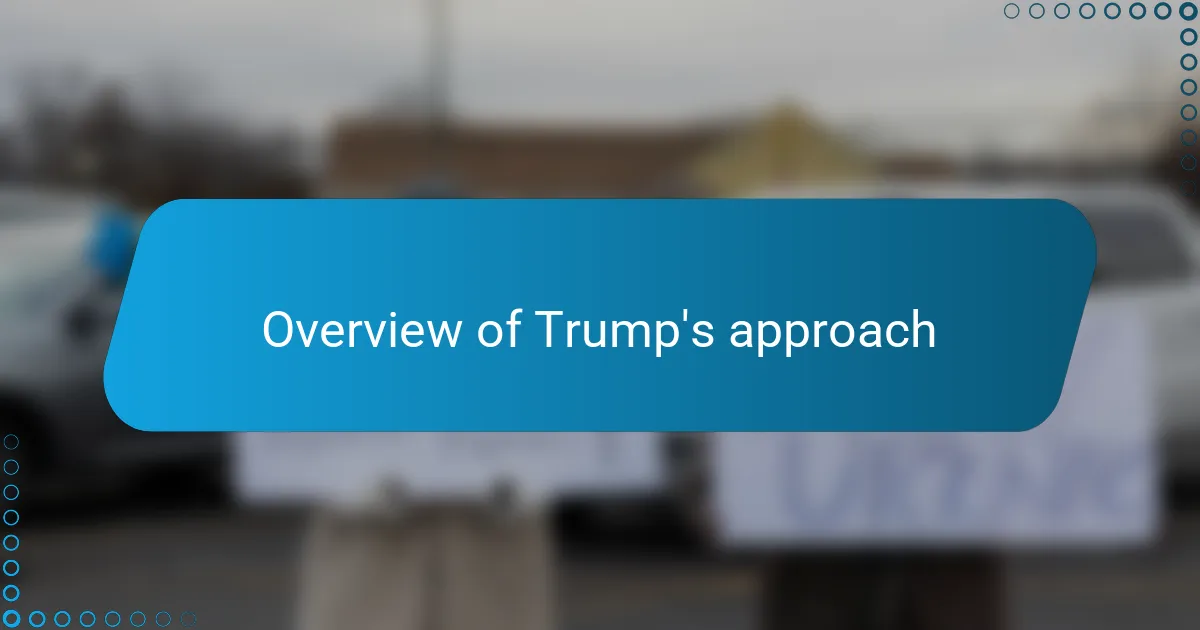
Overview of Trump’s approach
Donald Trump’s approach to influence is unmistakably bold and direct. From my observations, he often uses a mix of assertive rhetoric and media savvy to captivate attention, which can be both compelling and polarizing. I remember watching a rally where his energy was infectious, yet it sparked strong reactions on both sides, showing just how powerful his methods can be.
| Aspect | Trump’s Approach |
|---|---|
| Communication Style | Direct, often confrontational, uses simple and memorable language |
| Use of Media | Leverages social media aggressively to set narratives and bypass traditional press |
| Emotional Appeal | Targets emotions like fear, pride, and anger to mobilize supporters |
| Persuasion Technique | Repeats key messages relentlessly to reinforce viewpoints |
| Public Engagement | Utilizes large rallies and personal appearances to energize base |
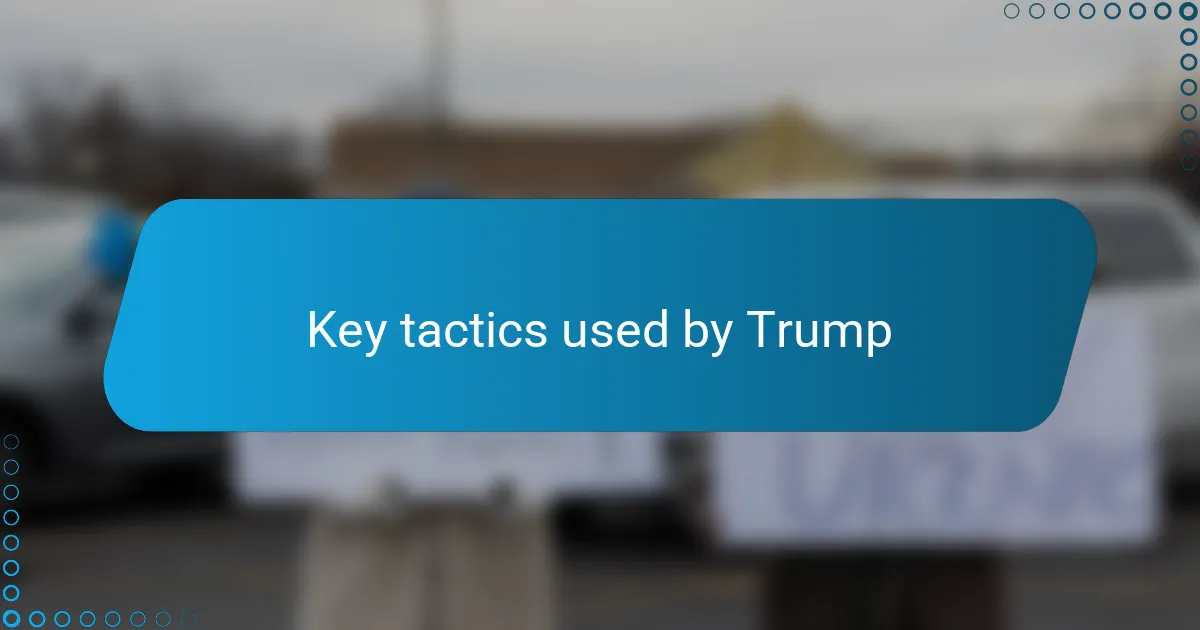
Key tactics used by Trump
One tactic Trump often uses is direct and simple messaging. I’ve noticed how this cuts through the noise, making complex issues feel straightforward, which many voters seem to appreciate. It feels like he’s speaking directly to everyday concerns, bypassing political jargon.
Another strategy is his use of provocation. Speaking from experience following political debates, I see how this tactic sparks strong emotional reactions, rallying his base while dominating media cycles. It’s a bold move that keeps him at the center of attention.
| Tactic | Effect |
|---|---|
| Simple Messaging | Clarifies complex topics, resonates with broad audiences |
| Provocation | Generates media coverage, energizes supporters |

Effects on US political landscape
Trump’s influence strategies have undeniably reshaped the US political landscape in ways that still ripple through current events. I remember tuning into news coverage during his presidency and feeling that the usual political norms were being upended—sometimes with a shock, other times with a strange sense of clarity for voters tired of traditional rhetoric. It makes me wonder: how much of our political atmosphere now is a direct result of his brazen approach?
From what I’ve seen, his style has shifted political communication toward emotion-driven narratives that prioritize loyalty and identity over policy details. This creates a political environment that feels more like a cultural battleground, where debates are often less about finding common ground and more about defending group allegiance. It’s an intense dynamic that changes how campaigns are run and how voters engage.
Yet, this transformation also raises critical questions about the long-term health of US democracy. Does this focus on polarization and media spectacle deepen divisions, or can it be harnessed to increase political participation in new ways? Personally, I find it both fascinating and concerning—Trump’s influence strategies have left a legacy that challenges us all to rethink political conversation.
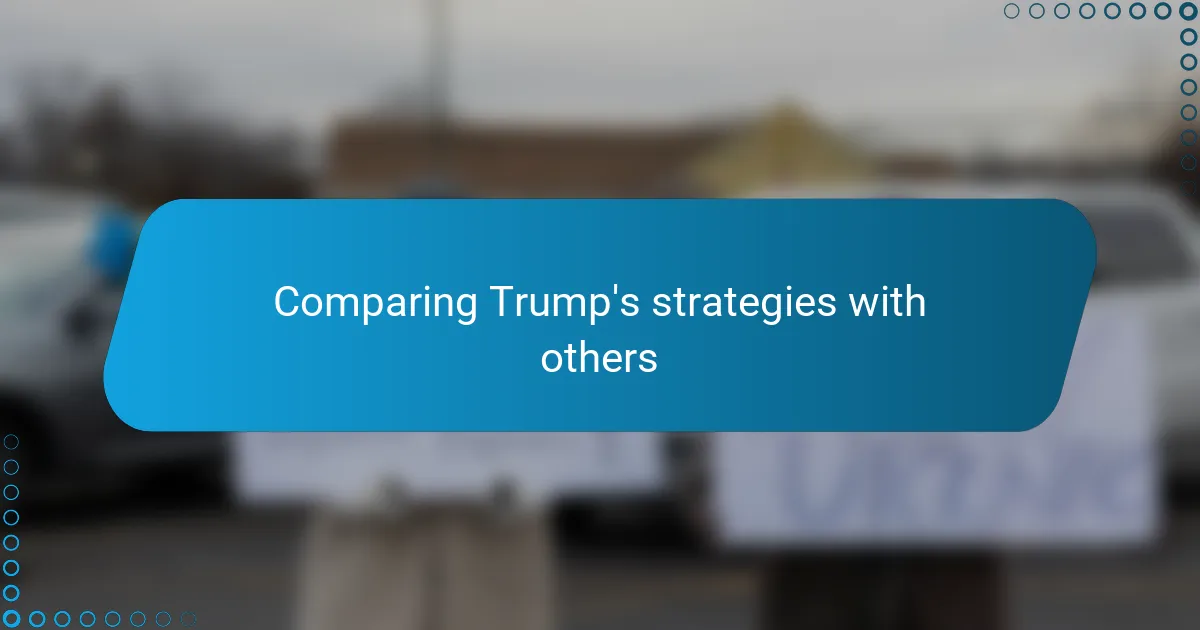
Comparing Trump’s strategies with others
When I compare Trump’s strategies with those of other political figures, what stands out is his unparalleled use of media to bypass traditional channels. While many politicians rely on carefully crafted speeches and formal press conferences, Trump’s direct tweets and provocative statements feel more immediate and raw. Have you ever noticed how this creates a sense of urgency that’s hard to ignore? From my perspective, it’s a game-changer in how political messages reach the public.
I’ve also seen leaders who prefer subtle persuasion and consensus-building rather than confrontation. Trump’s aggressive repetition and emotional appeals—tapping into pride, fear, and anger—contrast sharply with the more measured tones of others. This often results in a deeply divided audience, which I think is both his strength and his challenge. It makes me wonder: is such polarization a price worth paying for mobilizing a dedicated base?
What really intrigues me is how Trump’s rallies differ from traditional campaign events. Instead of formal speeches, his gatherings feel like energetic performances that focus on emotion more than policy details. When I’ve witnessed these events, there’s a palpable sense of community among supporters, which is something I rarely see in more conventional political settings. It suggests that influence isn’t just about what is said, but how it makes people feel.
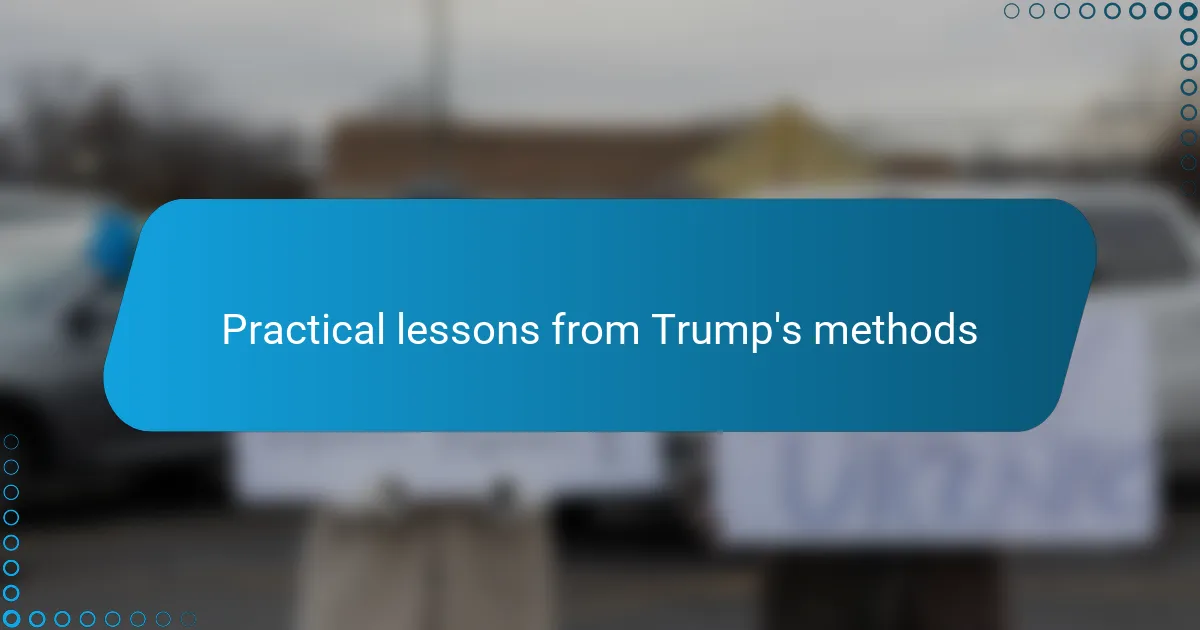
Practical lessons from Trump’s methods
Trump’s influence strategies demonstrate the power of clear, direct communication. From my experience watching political debates and campaigns, I’ve noticed how simplicity paired with repetition makes messages stick—something Trump excelled at, often cutting through the noise where others faltered.
What really strikes me is the use of emotional appeal combined with strategic framing. I remember feeling intrigued by how Trump could rally a crowd not just through facts, but by tapping into underlying fears and hopes, which made his influence almost visceral. Here are a few practical lessons from his methods based on what I’ve observed:
- Use simple, memorable phrases that audiences can easily repeat and share.
- Appeal directly to emotions like frustration or pride to create a strong connection.
- Repeat key messages consistently to reinforce impact over time.
- Frame opposition in a way that energizes your base while simplifying complex issues.
- Leverage media channels to amplify your voice continuously and dominate the narrative.
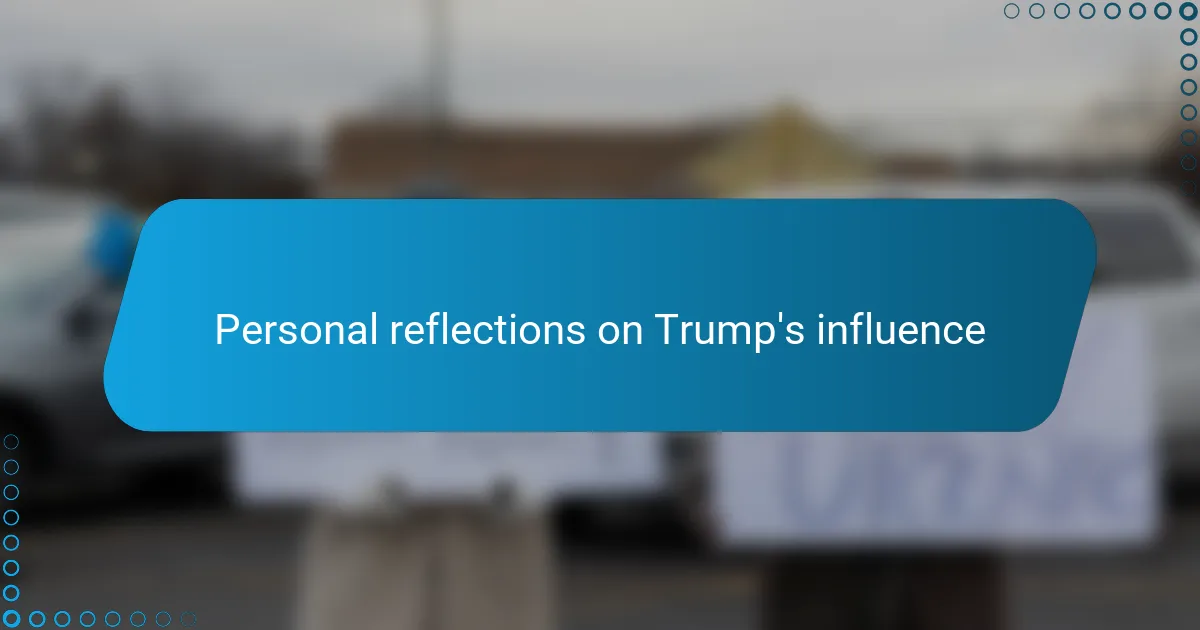
Personal reflections on Trump’s influence
Reflecting on Trump’s influence, I often find myself torn between admiration for his communication skills and concern over the deep divisions they foster. I remember watching one of his speeches where, despite disagreeing with much of what was said, I couldn’t deny the sheer magnetism he held over the crowd—it’s a reminder that influence isn’t just about content, but the emotional connection it creates.
Sometimes I ask myself: how much does the power of repetition and simplicity shape our political views without us realizing it? From what I’ve experienced, Trump’s relentless messaging often seeps into conversations and social media dialogues, making his narratives hard to escape or ignore, which shows just how effective his approach can be.
That said, there’s a part of me that worries about the long-term impact of wielding influence through provocation and division. While it energizes a base and commands attention, it can also deepen rifts that feel harder to bridge with each passing election cycle. I wonder if this legacy will inspire future leaders to replicate the style or seek new paths toward political unity.
